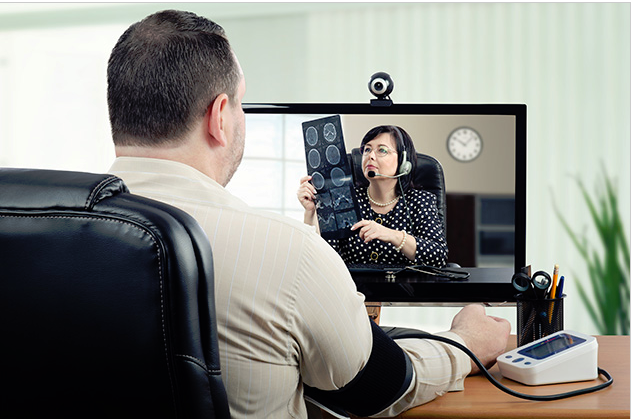Reducing Misdiagnosis with Virtual Second Opinions
by Christina Thielst, via Multibriefs

Telemedicine and telehealth services have been connecting patients and providers who aren't sitting in front of each other for many years. The trend has been picking up speed in more recent years as some encounters leverage the internet and go virtual.
Patients can have secure messaging encounters with their physicians, complete online refractory testing for a prescription from an optometrist or transmit data from sensory and other monitoring devices into their provider's electronic record. They can also obtain a second opinion from specialists and subspecialists without having to travel into a larger city, or across the country.
The journal BMJ Quality & Safety reported that approximately 12 million Americans experience diagnostic errors in outpatient care each year. This can result in unnecessary treatments, delays in providing the right care, adverse outcomes and/or quality of life and financial losses for patients, family caregivers and employers.
This makes up a portion of the $750 billion wasted on unnecessary services and other health inefficiencies.
Getting a second opinion has always been an option, but sometimes knowing where to turn is a barrier for both patients and their employers, or even health insurers. The result has been an increase in the use of virtual care coordination and second-opinion services to bridge the gap between patients, insurance and local providers.
Employers are adding these services to their employee benefit package, and health insurance companies are partnering with companies that provide these services. Both employers and insurance have a vested interest in better outcomes at lower costs and returning employees back to work.
In essence, a primary care physician is assigned to virtually meet with patients, collect relevant documentation and test results and prepare a case summary. The case summary along with the clinical documentation is then forwarded to specialists chosen for their expertise. These experts, sometimes two or three, prepare a report for the patient based upon their review and clinical opinion. In many cases, the experts are connected with highly respected academic medicine programs.
The emphasis is not on substituting local care with these services. Instead, the program aims to be a resource for the patient and their care team and make recommendations for other diagnosis to consider, additional testing, medications or other treatments. It is an opportunity to extend the latest learning out to the broader medical community for the benefit of all patients.
Considering that the average physician sees several patients each day, keeping up with the ever-evolving knowledge base can be a challenge. It is too easy to not recognize a rare condition or an atypical presentation of symptoms. Even physicians recognize this when they refer patients to colleagues for a second opinion.
The bottom line is for patients to be engaged and speak up when they don't feel they are getting the care they need. They will want to check to see what benefits are offered by their employer or as part of their insurance plan.
In some cases, patients may also find that peace of mind and resolving their frustrations is enough for them to bear the cost of an online second opinion alone. Still others just want their functional limitations to be resolved, so they can return to their normal activities and regain their independence.
Christina Thielst, FACHE, is a skilled and innovative hospital and healthcare administrator and entrepreneur with a deep desire for continually improving the health of the community being served. Christina is also the author of "Applying Social Media Technologies in Healthcare Environments."
|
